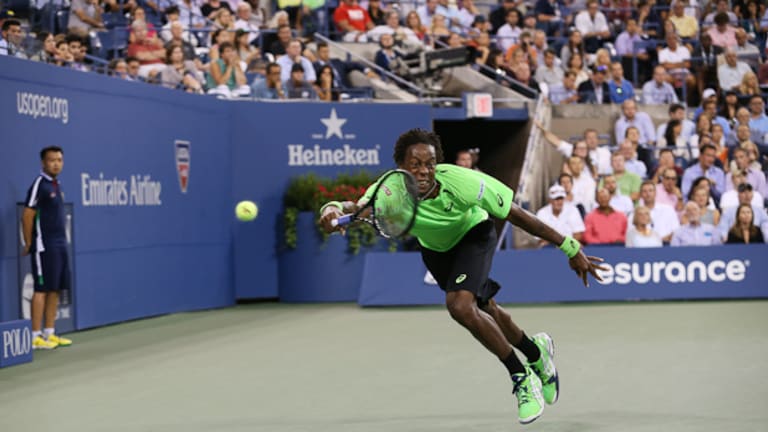“I’m French, and I’m fast,” Gael Monfils once informed us in a TV commercial. If anything, it was an understatement. No one covers the court the way the force of nature known as La Monf does, and no one better conforms to the U.S. idea of the flashy tennis player from France who can do everything except win.
Monfils will represent his country in the Davis Cup semifinals this weekend, when they face two-time defending champion Czech Republic at Roland Garros. As usual, France has a deep team; Monfils was a point away from the U.S. Open semifinals last week, but as of now team captain Arnaud Clement only has him down for doubles duty. "It's not easy to recover from jet lag," Monfils said yesterday. "I'm feeling a bit tired."
Monfils, 28, has been to the semis of his home Slam, and he seems to relish the chance to send his countrymen on an emotional roller-coaster with every match. Like Andy Murray, though, he has often seemed to enjoy himself more in New York. He doesn’t feel the same pressure to succeed, and he says he loves the city and thrives on the Open’s chaotic buzz. The tournament has loved him right back. In 2013, a night audience in Louis Armstrong Stadium stood and chanted his name, despite the fact that he was playing the American No. 1, John Isner. This year, in the early going, Monfils was entertainer in residence on the Grandstand, where full houses came to see him put on his patented mix of tennis and acrobatics.
In truth, though, La Monf’s Open was notable for being more about tennis, and less about entertainment, than usual. Over his first four rounds, he won all 12 sets he played, including three straight over world No. 8 Grigor Dimitrov. In the quarters, Monfils won the first two sets, and nearly the fourth, from Roger Federer, in the match of the tournament. That’s when, as the clock tolled midnight, he finally turned back into the Monfils of old, double-faulting at inopportune moments and running out of gas down the stretch. Still, there was some reason to believe that he could be the next male player to pull a Stan Wawrinka and transform himself from underachiever to late-bloomer as he approaches 30. Monfils certainly doesn’t seem to have slowed down.
